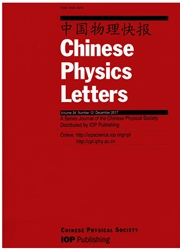

 中文摘要:
中文摘要:
Heavy-ion collisions are powerful tools for studying hypernuclear physics. We develop a dynamical coalescence model coupled with an ART model (version 1.0) to study the production rates of light nuclear clusters and hypernuclei in heavy-ion reactions, for instance, the deuteron (d), triton (t), helium (3He), and hypertriton (3 KH) in minimum bias (0–80% centrality) 6Li ? 12C reactions at beam energy of 3.5A GeV. The penalty factor for light clusters is extracted from the yields, and the distributions of h angle of particles, which provide direct suggesetions about the location of particle detectors in the near future facility—High Intensity heavy-ion Accelerator Facility (HIAF) are investigated. Our calculation demonstrates that HIAF is suitable for studying hypernuclear physics.
 英文摘要:
英文摘要:
Heavy-ion collisions are powerful tools for studying hypernuclear physics. We develop a dynamical coalescence model coupled with an ART model (version 1.0) to study the production rates of light nuclear clusters and hypernuclei in heavy-ion reactions, for instance, the deuteron (d), triton (t), helium (\(^3\)He), and hypertriton (\(^3_\Lambda \)H) in minimum bias (0-80% centrality) \(^6\)Li + \(^{12}\)C reactions at beam energy of 3.5A?GeV. The penalty factor for light clusters is extracted from the yields, and the distributions of?\(\theta \) angle of particles, which provide direct suggesetions about the location of particle detectors in the near future facility—High Intensity heavy-ion Accelerator Facility (HIAF) are investigated. Our calculation demonstrates that HIAF is suitable for studying hypernuclear physics.
 同期刊论文项目
同期刊论文项目
 同项目期刊论文
同项目期刊论文
 期刊信息
期刊信息
